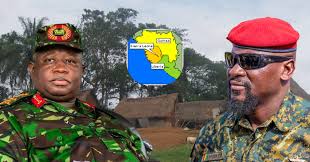By Hassan Osman Kargbo
In a significant step towards the resolution of boundary issues between Guinea and Sierra Leone, the third day of the Technical Committee of the Joint Boundary Commission (JBC) saw both countries agreeing to produce critical boundary documents that could pave the way for a clearer and more formal understanding of their territorial limits.
The meeting, held on March 26, 2025, brought together experts, diplomats, and key stakeholders from both nations to deliberate on the historic and legal framework surrounding the boundary between the two Mano River Union countries.
The meeting took a major step forward when participants agreed to divide into three groups to tackle different aspects of the boundary issue. These groups focused on the administrative, cartographic, and legal components of the boundary, with specific responsibilities for each.
The Administrative Group:
The administrative group’s mandate was to review and examine a range of historical documents dating back to 1885, including treaties, diplomatic exchanges, joint declarations, minutes of meetings, and protocols between the British and French colonial powers, as well as documents produced after both countries gained independence. These documents were crucial for understanding the evolution of the boundary and the various agreements and decisions made over time.
By meticulously analyzing these records, the administrative group aimed to piece together the historical narrative of how the boundary was established and maintained, shedding light on past diplomatic negotiations and decisions made by colonial and post-independence leaders of both countries.
Cartographic Group: Mapping the Boundary
The cartographic group focused on examining maps that illustrate the boundary between Guinea and Sierra Leone, particularly those created during the colonial era. These maps, drawn predominantly by British and French cartographers, were central to understanding the geographical demarcation. Despite the colonial linguistic differences between the two nations, it became clear that the maps generally aligned and provided a consistent depiction of the boundary.
The cartographers’ work was pivotal in confirming that, despite the passage of time, the beacons marking the boundary have not moved. Modern technology now allows for precise location tracking of these beacons, and with accurate geospatial coordinates, they can be located anywhere in the world, bringing a sense of certainty to the boundary’s physical demarcation.
Legal Group: Legality of Documents
The legal group focused on the legal status of the documents and their validity in establishing the boundary between Guinea and Sierra Leone. This group reviewed the legal framework and the legitimacy of the historical records, ensuring that all documents aligned with international law and could withstand scrutiny in future legal contexts. This included confirming the legal validity of colonial-era treaties and declarations and their implications on the current boundary disputes.
Moreover, the discussions held by these groups led to an exciting consensus: the boundary between Guinea and Sierra Leone is well-established, and all documents examined point to a defined territorial line. The boundaries remain intact, and the beacons marking the boundary are fixed, providing a foundation for further boundary clarification and enforcement. Thanks to modern geospatial technology, these beacons can now be pinpointed with precision, offering confidence in their continued validity.
Despite this progress, it is important to note that the journey to fully resolve the boundary issue has just begun. While the two countries have agreed to continue working together, the process of reaffirming the boundary and ensuring its implementation will require further deliberations. What is particularly encouraging is the spirit of cooperation shared between Guinea and Sierra Leone, supported by the African Union Commission’s Peace and Security Commission. This all-African initiative brings together experts and participants from across the continent, reinforcing a shared commitment to resolving the issue through mutual collaboration.
The process has proven to be an entirely African-led effort, with experts, moderators, and participants all hailing from the continent, fostering a congenial and cooperative environment, showcasing Africa’s capacity to address its own issues through dialogue and unity.
As the journey progresses, the nations of Guinea and Sierra Leone remain committed to working hand-in-hand, guided by the principles of peace, security, and regional integration.
The boundary agreement represents a significant milestone in the relationship between the two countries; and as work continues under the Joint Maritime Delimitation and Boundary Reaffirmation Commission, the horizon looks clearer for a more formal resolution.












